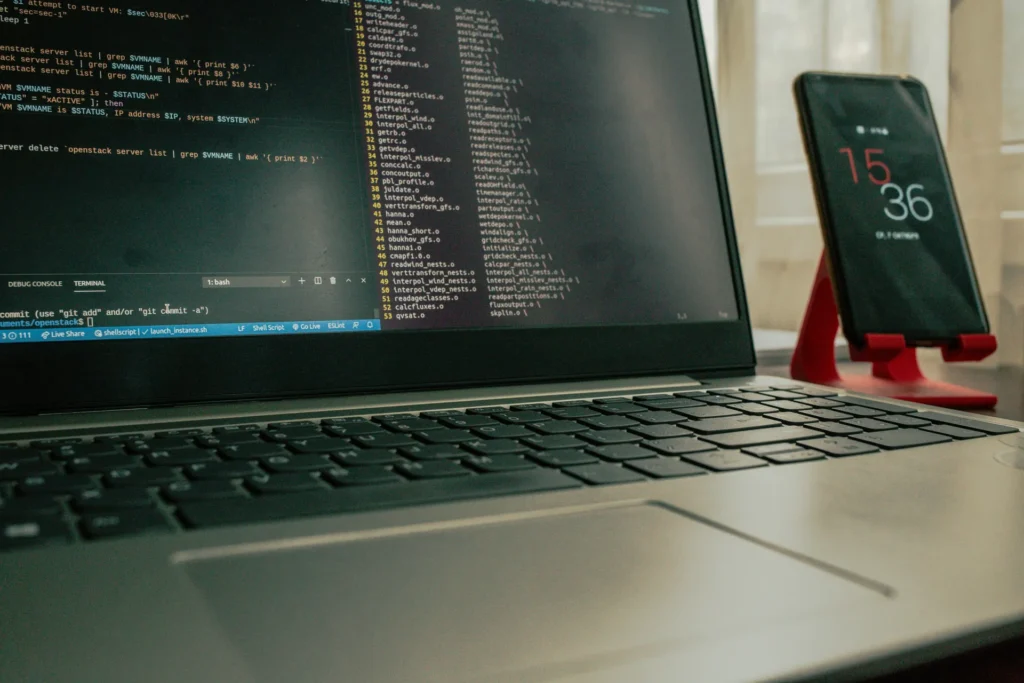In the ever-evolving landscape of cybersecurity, staying ahead of cyber threats is a constant challenge for organizations, security analysts, and individuals alike. Cybersecurity is not merely about protecting computer systems and networks from unauthorized access; it involves a wide array of strategies, best practices, and continuous learning to safeguard sensitive data and prevent devastating cyber attacks.
As we navigate this complex digital world, it is essential to stay informed about the latest vulnerabilities and threats. One notable example is the recently identified CVE-2025-24054, which is currently under active attack. This vulnerability underscores the importance of robust security solutions, effective incident response planning, and the implementation of cybersecurity best practices to mitigate risks posed by malicious actors.
For cybersecurity professionals—whether entry-level analysts or seasoned experts—understanding and responding to emerging threats is vital. The Bureau of Labor Statistics predicts significant growth in the demand for security analysts, emphasizing their critical role in protecting businesses and personal data.
This article will explore the specifics of CVE-2025-24054, its impact, and the defensive measures you can implement to safeguard your organization against this and similar threats.
Understanding CVE-2025-24054

Technical Overview of the Vulnerability
CVE-2025-24054 is a medium-severity vulnerability in Microsoft Windows, specifically affecting the New Technology LAN Manager NTLM authentication protocol.
This vulnerability is characterized by an external control of file name or path in Windows NTLM, which allows an unauthorized attacker to perform spoofing over a network.
The issue arises when a user interacts with a specially crafted `.library-ms` file, such as selecting, inspecting, or performing any action other than opening or executing the file.
The vulnerability exploits a weakness in how Windows Explorer handles these files. When a user extracts a ZIP archive containing a malicious `.library-ms` file, Windows Explorer initiates an SMB authentication request to a remote server. This request inadvertently leaks the user’s NTLMv2-SSP hash to the attacker-operated SMB server, without requiring any further user interaction.
How It Is Exploited in the Wild
The exploitation of CVE-2025-24054 in the wild is highly sophisticated and involves several tactics to deceive users and capture sensitive credentials. Threat actors have been using phishing campaigns to distribute malicious files, often via email links or attachments.
For instance, attackers have sent emails with ZIP archives containing the malicious `.library-ms` files. Once the user downloads and extracts the archive, the NTLMv2-SSP hash is leaked to the attacker’s SMB server.
These campaigns have been observed targeting government and private institutions, particularly in Poland and Romania. The attackers use the leaked NTLM hashes to perform pass-the-hash attacks, relay attacks, or even brute-force the passwords offline.
This can lead to lateral movement and privilege escalation within the compromised networks, especially if the compromised accounts have high privileges.
The speed and efficiency with which threat actors have adapted and exploited this vulnerability highlight the critical need for immediate patching and robust security measures. Despite Microsoft’s initial assessment that the vulnerability was “less likely” to be exploited, it has been actively exploited in multiple campaigns, underscoring the importance of proactive vulnerability management and security awareness training.
Impact Assessment

Direct Consequences for Affected Users
The direct consequences of the CVE-2025-24054 vulnerability for affected users are both severe and multifaceted. When a user interacts with a maliciously crafted .library-ms file, even minimal actions—such as selecting or inspecting the file—can trigger the exploit, leading to the leakage of their NTLMv2-SSP hash.
This hash can then be exploited by attackers to perform pass-the-hash attacks, relay attacks, or brute-force the password offline. If the compromised account possesses high privileges, this can result in lateral movement and privilege escalation within the network. Attackers could gain access to sensitive data and potentially take control of critical systems. The ease with which this exploit can be triggered—often without noticeable user interaction—makes it particularly dangerous, emphasizing the urgent need for immediate patching and enhanced security measures.
Broader Implications for Cybersecurity
The broader implications of CVE-2025-24054 extend beyond the immediate consequences for affected users, raising significant concerns for cybersecurity at large. The rapid exploitation of this vulnerability by threat actors—despite Microsoft’s initial assessment that it was “less likely” to be exploited—demonstrates the agility and adaptability of modern cyber threats.
This vulnerability reflects a larger trend where legacy authentication protocols like NTLM, which have been deprecated in favor of more secure alternatives like Kerberos, continue to be exploited due to their widespread use in existing systems. The fact that multiple campaigns have been observed targeting both government and private institutions in countries such as Poland and Romania indicates that this vulnerability is being leveraged in broader, coordinated attacks. These attacks compromise not only individual systems but also the overall security posture of organizations.
Such incidents underscore the critical need for proactive vulnerability management, robust patching strategies, and ongoing security awareness training. Furthermore, the exploitation of CVE-2025-24054 highlights the importance of adhering to cybersecurity best practices, such as implementing multi-factor authentication, enforcing least privilege access, and ensuring proper network segmentation and monitoring.
Organizations must also stay updated with the latest security patches and follow guidelines from authorities like CISA, which has added this vulnerability to its Known Exploited Vulnerabilities (KEV) catalog. These actions are vital to mitigating the risks posed by this and similar vulnerabilities.
Defensive Measures and Best Practices

Immediate Steps for Mitigation
To mitigate the risks associated with CVE-2025-24054, several immediate steps can be taken to protect your systems and networks. The most critical action is to apply the security patch released by Microsoft on March 11, 2025, as soon as possible. This patch addresses the vulnerability in Windows Explorer that leads to NTLM hash disclosure and is essential for preventing further exploitation.
In addition to patching, organizations should ensure that all systems, especially those with high-privilege accounts, are updated promptly. Federal Civilian Executive Branch (FCEB) agencies, for example, are required to apply the necessary fixes by May 8, 2025, to secure their networks.
Another step is to enhance email security and user awareness. Since the vulnerability is often exploited through phishing campaigns, educating users about the risks of opening suspicious emails and attachments can significantly reduce the attack surface.
Implementing robust email filters and conducting regular security awareness training can help in this regard.
Disabling unnecessary services such as RemoteAccess and TapiSrv can also help mitigate the risk. Additionally, ensuring that SMB signing and NTLM relay protections are in place can prevent lateral movement and privilege escalation within compromised networks.
Long-Term Security Strategies
Beyond immediate mitigation, several long-term security strategies can be implemented to strengthen overall cybersecurity posture and prevent similar vulnerabilities from being exploited in the future.
One key strategy is to adopt a proactive patch management policy. Regularly updating systems and software with the latest security patches can significantly reduce the risk of exploitation. This includes not only operating system updates but also updates for other software and applications that may be vulnerable to similar exploits.
Implementing multi-factor authentication (MFA) is another critical measure. MFA adds an additional layer of security, making it more difficult for attackers to use stolen NTLM hashes or other credentials to gain unauthorized access to systems and networks.
Network segmentation and monitoring are also essential long-term strategies. Segmenting the network can limit the lateral movement of attackers in case of a breach, while continuous monitoring can help detect and respond to threats more effectively. Using tools like Security Information and Event Management (SIEM) systems and Extended Detection and Response (XDR) solutions can enhance this capability.
Finally, adhering to industry best practices and frameworks such as the NIST Cybersecurity Framework can provide a comprehensive approach to managing cybersecurity risks. This includes regular risk assessments, incident response planning, and continuous improvement of security controls and processes.
Conclusion
The discovery and active exploitation of CVE-2025-24054 highlight the critical importance of proactive cybersecurity measures. This vulnerability, which exposes NTLM hashes with minimal user interaction via malicious `.library-ms` files, has been swiftly exploited by threat actors targeting both government and private institutions.
To safeguard against this and similar threats, it is essential to apply security patches promptly, enhance email security and user awareness, and implement robust security practices such as multi-factor authentication, network segmentation, and continuous monitoring.
Organizations should also adhere to industry best practices and frameworks like the NIST Cybersecurity Framework to ensure comprehensive protection. Taking immediate action is essential to mitigate the risks associated with CVE-2025-24054 and to maintain a resilient cybersecurity posture in the face of evolving threats.
Learn more about at https://research.checkpoint.com/2025/cve-2025-24054-ntlm-exploit-in-the-wild/
